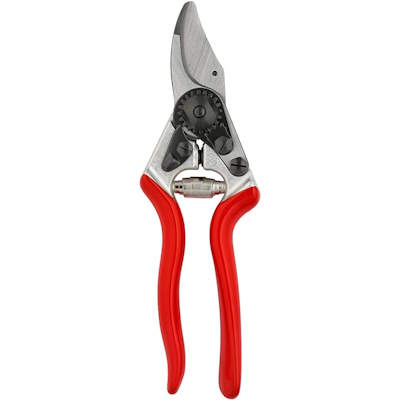How to prune hydrangeas – experts advise on the techniques for each variety and highlight the most common mistakes, so you can get it right first time
Ensure healthy and flourishing hydrangeas next year, whatever variety you grow, with our expert pruning tips
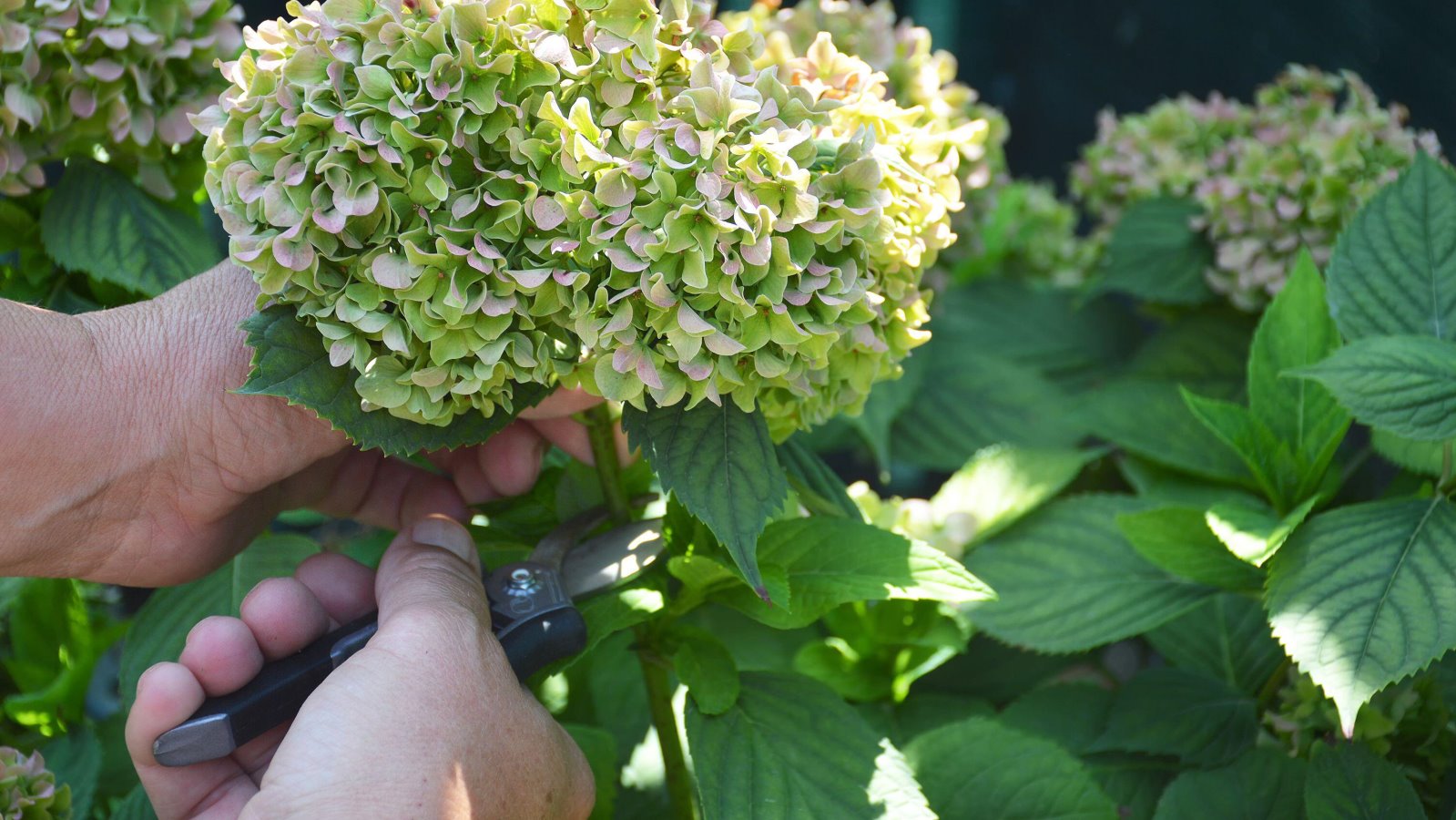

Rachel Bull
Hydrangeas are backyard staple. They are versatile flowering shrubs, which have become a mainstay in many types of garden design.
Hydrangeas are fairly low maintenance, however it is important to understand how and when to prune hydrangeas correctly to get the best from them, maximize blooms and to ensure that they can survive through winter. Pruning at the wrong time is the first major pruning mistake, and can risk the health of your plant.
While learning how to grow hydrangeas is relatively simple, they can be disappointing over time if they are not correctly maintained through correct pruning and deadheading. The way that you prune your hydrangea will depend on the variety that you grow. Here we will look at the different types of hydrangea and how to prune them, and by following our expert tips, this is an easy skill to master.
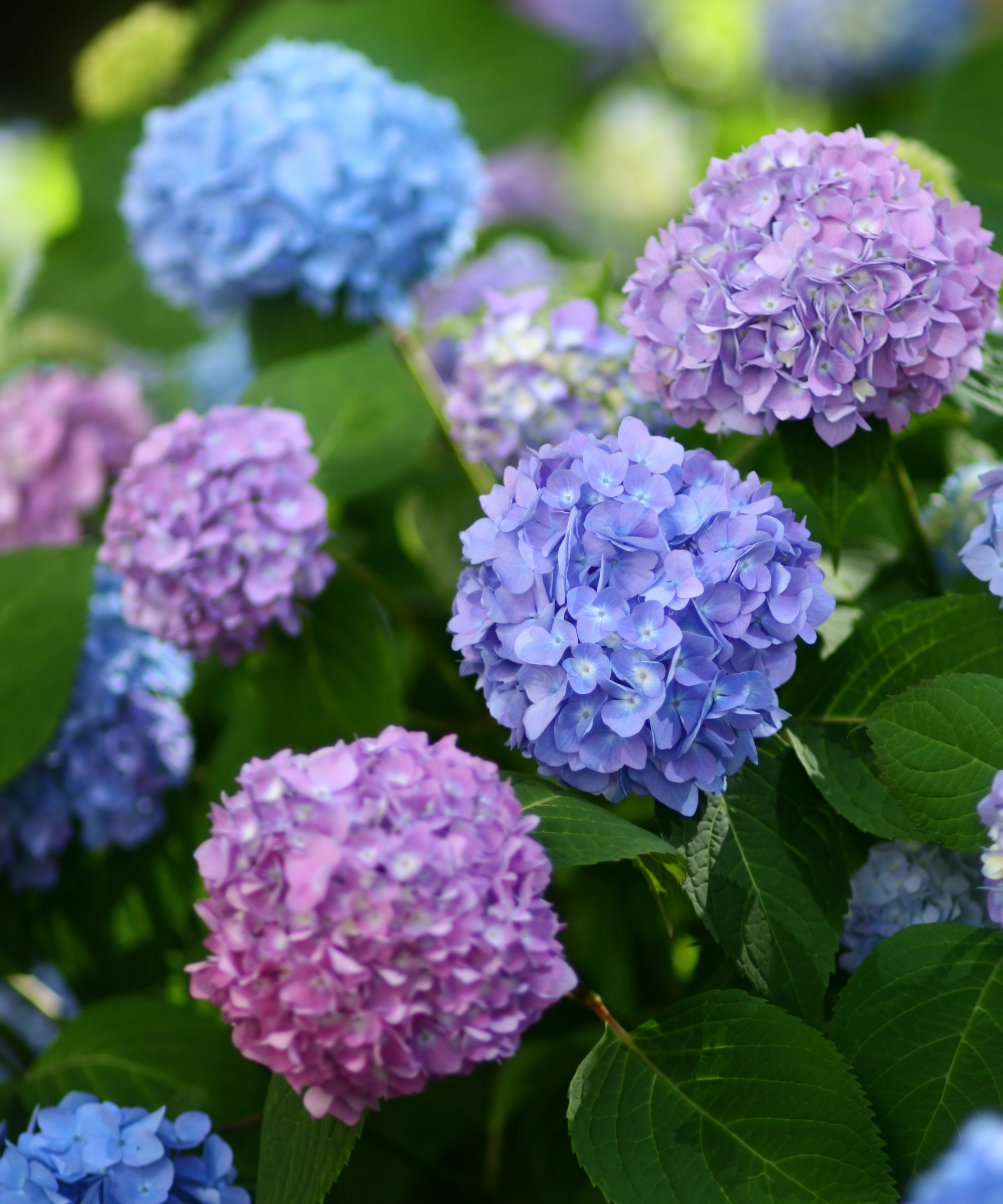
What to consider before you begin pruning hydrangeas
Hydrangeas are low maintenance shrubs, and among the best flowering shrubs you can grow in your yard. Once you have identified the variety that you have, it's easy to get to grips with how to prune hydrangeas.
Some of these fast growing shrubs flower on old wood and some on new wood, so it is important to prune them the correct way so as to not detrimentally affect their flowering. It does differ depending on the variety.
Hydrangeas are either pruned in late winter or spring, or late summer for climbing types. Pruning hydrangeas in fall can leave the plants at risk of succumbing to winter frosts - the cold is capable of harming stems and buds. Pruning hydrangea that flower on old wood in fall or winter will also have a large impact on the blooms you will get the following year. This is because you’ll actually be removing the buds that would carry next year's flowers.
'The best way to prune hydrangeas, as with all pruning, should be carried out with a sharp, clean pair of pruning shears. This is to create a clean cut that is less prone to infection,' says Drew Swainston, former professional gardener and content editor at Homes & Gardens.
Design expertise in your inbox – from inspiring decorating ideas and beautiful celebrity homes to practical gardening advice and shopping round-ups.
Any time you do pruning, it should never be underestimated how important it is to have clean and sharp garden tools. If you head out to start cutting plants with blunt or rusty tools that are covered in dried plant residue or sap, then you are putting the health of your hydrangea at risk.
'If you find that your way of pruning is not yielding good blooms or a healthy plant, you may want to change your approach,' adds Drew. 'Observe your plant through spring and summer to make sure you know whether it flowers from old or new growth.'

Drew qualified as a journalist and wrote for many websites and publications, before studying for a horticulture qualification. He worked as a professional gardener for several years, specializing in kitchen gardening. He's now bringing his expertise and passion to Homes & Gardens as a member of our team.
How to prune mophead and lacecap hydrangeas
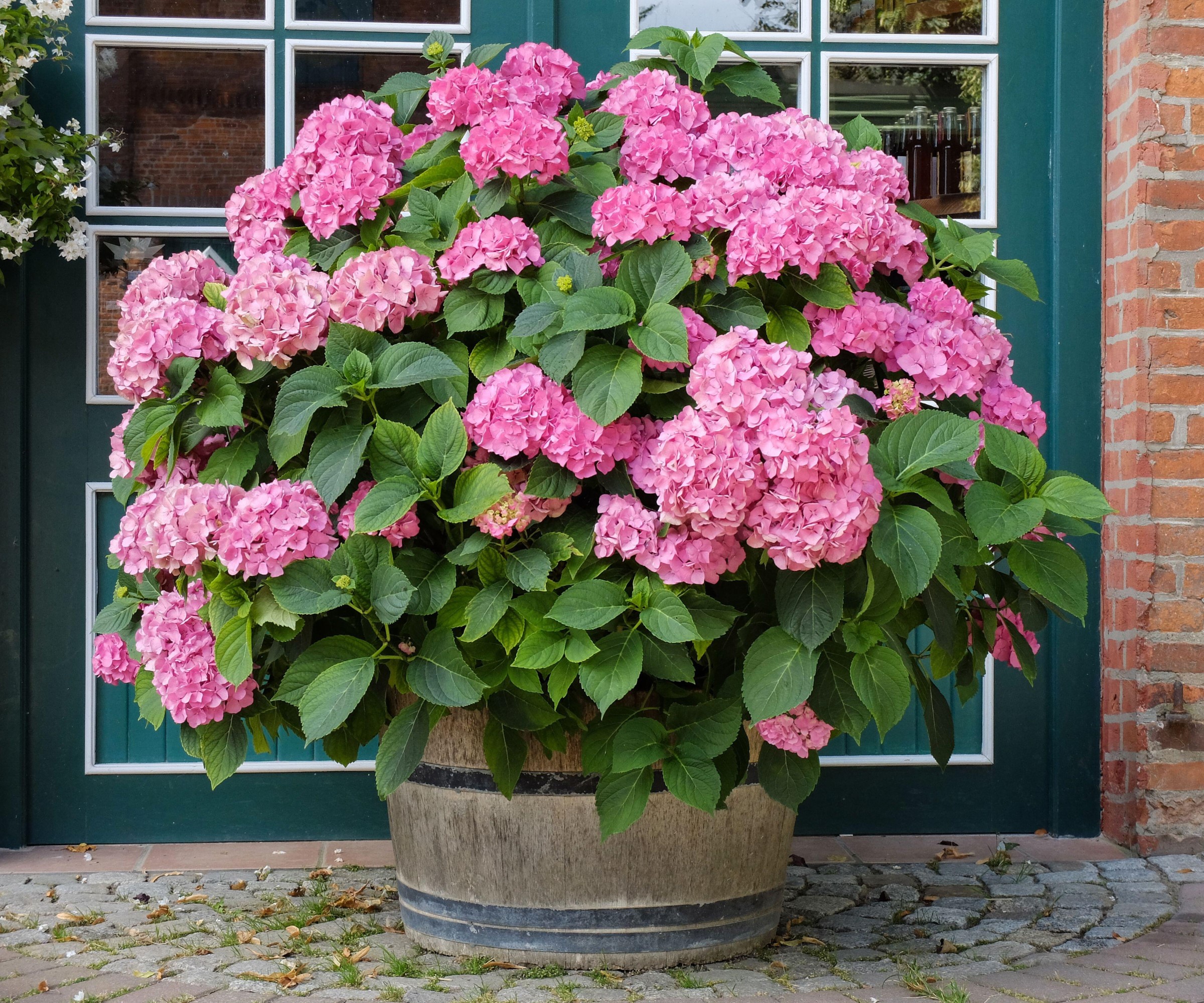
The method for pruning mophead hydrangeas and lacecap hydrangeas (Hydrangea macrophylla) – also known as bigleaf hydrangeas – is the same.
Both these varieties should be pruned in late winter or early spring. 'By leaving the faded blooms in place over the winter, this will actually protect the new buds forming underneath from frost damage,' says Rachel Bull, head of gardens at Homes & Gardens.
Mophead hydrangeas are a common choice for backyards with their full, round heads of large petals in shades of blue, pink, green and white. This makes them a popular shrub choice for cottage garden ideas and they also make good shrubs for shade. Lacecap hydrangeas are identified by tiny flowers in the center of the bloom and an outer border of larger petals.
When pruning mophead hydrangeas and lacecaps in early spring, follow this method:
- Cut out one or two of the oldest, weakest stems at the base of the plant to encourage new growth and better blooms.
- Using clean and sharp pruning shears, carefully remove old flowerheads just above a pair of buds.
- Be careful not to cut off any of the flower buds.
- If the bigleaf hydrangea shrub has been neglected and has lots of overlapping, tangled branches, you can do a harder prune and cut the stems down to the base of the plant. However, the hydrangea may not bloom until the following year.

Rachel is a gardening editor, flower grower and floral designer. Her journalism career began on Country Living magazine, sparking a love of container gardening and wild planting. After more than a decade writing for and editing a range of consumer, business and special interest titles, Rachel became editor of floral art magazine The Flower Arranger. She then trained and worked as a floral designer and stylist in London for six years, before joining the Homes & Gardens team.
How to prune climbing hydrangeas

Climbing hydrangeas, such as Hydrangea anomola subsp. petiolaris, such as this great-value shrub from Nature Hills, Hydrangea seemannii, or H. serratifolia are pruned in summer, after flowering.
'The reason that climbing hydrangeas are pruned in summer is because the flowers are produced on the previous year's wood,' says Drew Swainston. 'If they are pruned earlier in spring, before flowering, the blooms for that year will be sacrificed.'
You can prune Hydrangea petiolaris immediately after flowering to shorten any branches growing out from the wall or support, otherwise only light pruning is required to remove dead or damaged stems.
How to prune Hydrangea paniculata and Hydrangea arborescens
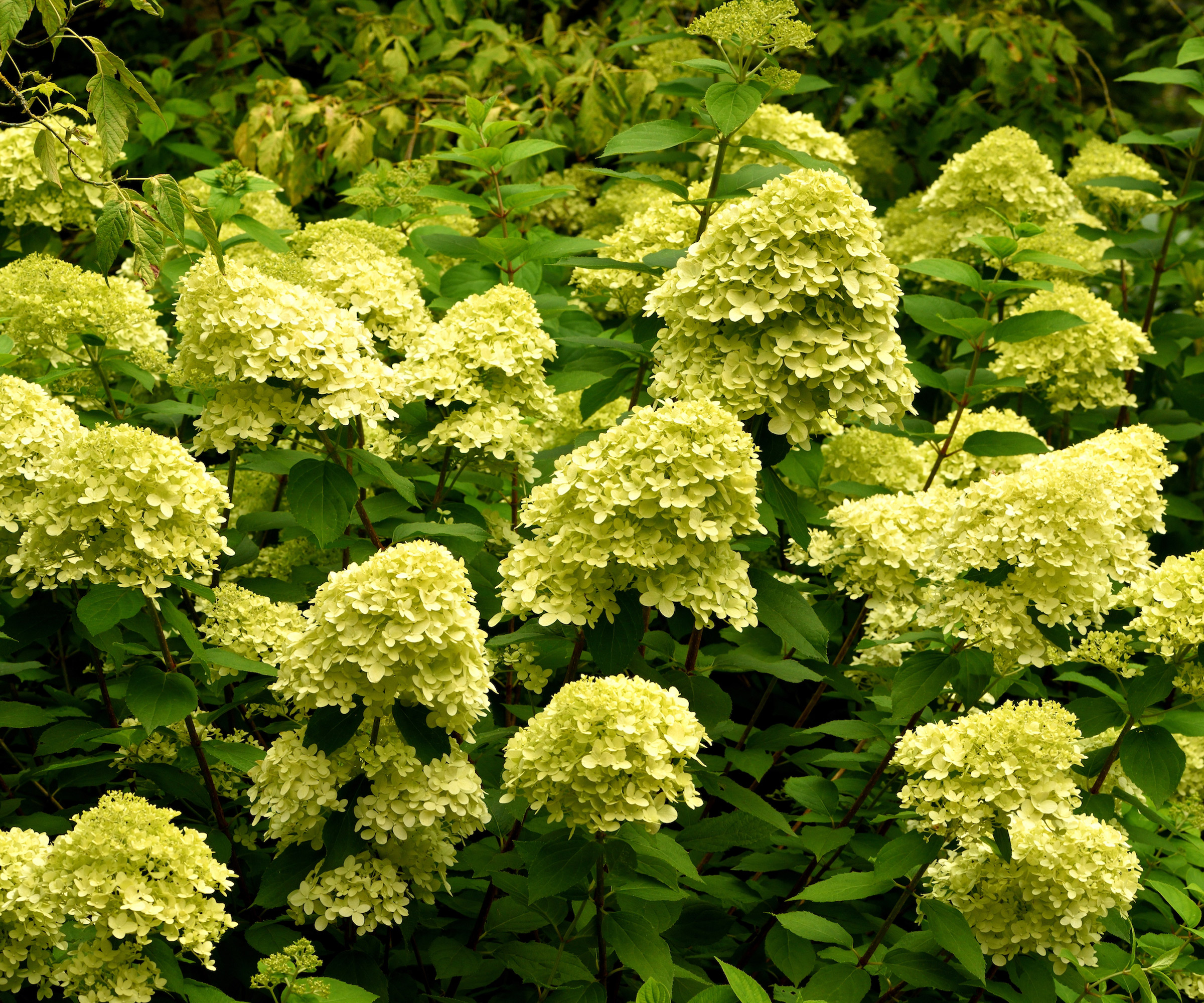
Hydrangea Paniculata with its cone-like heads of blooms, and Hydrangea aborescens with its spherical flower heads, are also pruned in early spring.
They produce flowers on new wood, so they can be pruned back harder without sacrificing that year's flowers. Prune old branches back to the lowest pair of healthy buds near ground level for a neat framework.
You don’t actually need to prune these varieties, but you can do it to keep them from getting too tall.
Other types of hydrangea, including Hydrangea aspera and Hydrangea quercifolia, need only light pruning in spring. Simply remove dead flower heads and any crossing stems.
Top tip: By cutting stems to different heights, you’ll get flowerheads produced at different levels.
Shop hydrangea pruning essentials
FAQs
What happens if you don't prune hydrangeas?
If you don't prune hydrangeas then they can eventually resemble a tangled mass of woody stems, and the flowers will become smaller and less showy. If your hydrangeas are not blooming, lack of pruning is often a reason, which is why most expert gardeners would say this is a big hydrangea pruning mistake.
Regular pruning of hydrangeas helps to maintain their shape and also encourages new growth and a better display of blooms. It's this strong, new growth that ensures you have lots of large, healthy flowers to enjoy in the years to come.
Should you cut off dead hydrangea blooms?
Deadheading hydrangeas – or removing spent flowers from the stem to encourage better blooming later on – can be done with some hydrangeas but not all.
Dead blooms should only be removed from mophead hydrangeas after flowering in mild areas. It is better to leave the flowerheads on the plant over winter to provide some frost protection.
By leaving the dried flowers on the plant, they will provide interest in the garden through to spring, and can be a stunning sight when covered in a coating of frost. The flowers on the hardier lacecaps, however, can be deadheaded after flowering.
Hydrangeas do not need lots of pruning in order to grow well and produce fantastic flushes of flowers each year.
It is often recommended to not prune more than one-third of any plant each year. Following the one-third pruning rule can help maintain a plant’s health. Removing more growth than this can lead to unpredictable results, as the plant will be stressed and can put out lots of weak and straggly growth. A stressed shrub that is covered in pruning cuts is also at increased susceptibility to pests and diseases.
Once you're confident knowing how to prune hydrangeas, you'll be rewarded with wonderfully healthy and floriferous shrubs. There are so many ways you can grow hydrangeas, such as in pots to place on a patio or balcony, or by landscaping with hydrangeas in a larger space.
Rachel is senior content editor, and writes gardening content for homesandgardens.com, Homes & Gardens magazine, and its sister titles Period Living Magazine and Country Homes & Interiors. She has written for lifestyle magazines for many years, with a particular focus on gardening, historic houses and arts and crafts, but started out her journalism career in BBC radio, where she enjoyed reporting on and writing programme scripts for all manner of stories. Rachel then moved into regional lifestyle magazines, where the topics she wrote about, and people she interviewed, were as varied and eclectic as they were on radio. Always harboring a passion for homes and gardens, she jumped at the opportunity to work on The English Home and The English Garden magazines for a number of years, before joining the Period Living team.
- Rachel BullHead of Gardens
You must confirm your public display name before commenting
Please logout and then login again, you will then be prompted to enter your display name.
